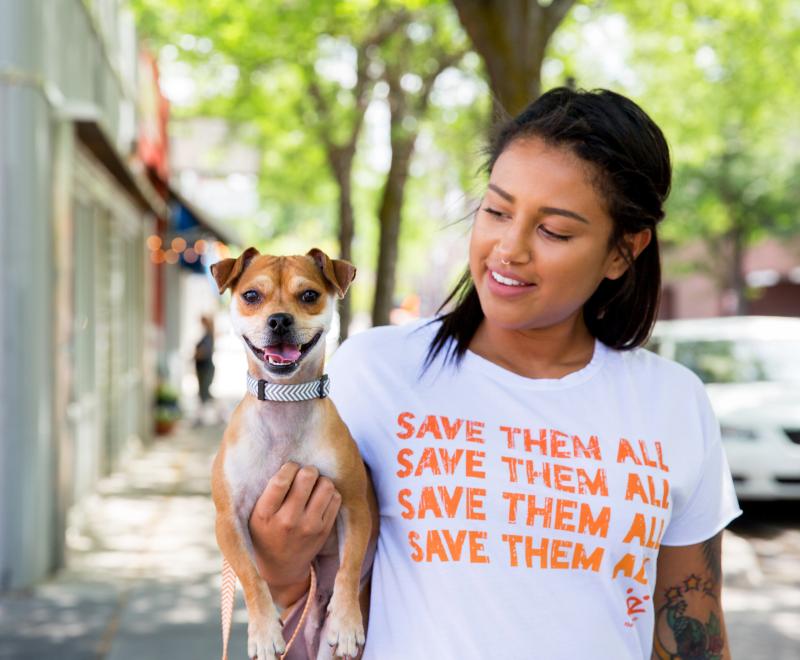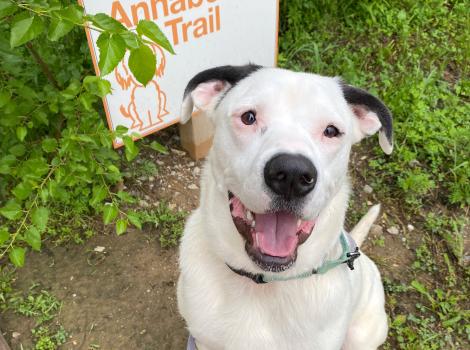Foster caregiver drawn to cats with special needs

Lizel Allen has had a bit of a unique roommate situation over the years. For one, they’ve all been particularly fuzzy. Some stay for mere days while others live with her for several months. And she’s gone through 165 of them over the past decade.
Lizel began fostering pets for Best Friends Animal Society back in 2014. She had already been volunteering for a while — so much so that Best Friends staff asked her to mentor new volunteers — and she wanted to try something new. She inquired about fostering and went home with kittens that very same night. It was the beginning of a new passion.
“Cats are just funny roommates, right?” she says. “They are just fun to spend time with, and they all have different personalities. And getting to know each of their own little quirks is fun.”
Best Friends’ goal is for all shelters nationwide to reach no-kill by 2025, and people who step up to foster pets, either with Best Friends or any animal shelter or rescue organization, play a vital part in reaching that goal.
For their purring roommates, Lizel and her husband have a dedicated “foster room” — one of the bedrooms in their two-bedroom condo, which they also share with three permanent-resident cats. They even tiled the bedroom, so it would be easier to clean. And the roster of residents has continued to evolve.
Fostering cats with special needs
Lizel started out fostering kittens, helping them grow healthy and strong until they could be adopted. But as kitten season (the time of year when most litters of kittens are born) drew to a close, there was just one young feline who needed a foster home. That’s how Lizel met Dahlia, who introduced her to helping cats with special needs.
Dahlia had broken her back and couldn’t go to the bathroom on her own. So Lizel worked with Best Friends staff to learn how to manually express, or empty, Dahlia’s bladder. At first, Lizel was hesitant about this process, but “after the third time practicing, I was like ‘I got this,’” she says.
[Volunteer makes a big difference for tiny kittens]
Pancake, a gorgeous tortoiseshell feline, was another cat with special needs who landed in Lizel’s foster room. She had a severed spine and also needed help going to the bathroom, so Lizel was able to draw on the skills she learned with Dahlia to express Pancake’s bladder.
“It feels extra awesome (to help cats with special needs),” she says. “I’m learning new skills. It’s nice to be needed — that animal needs me. It feels good to be able to provide that care they need.” As a bonus, Lizel says the skills she’s learning through fostering are helping her care for her own cats.
Advice from a seasoned foster caregiver
Lizel has no plans to slow down when it comes to fostering litters of kittens and cats with special needs. (A couple of canine foster pets have even been included over the years.) That foster room needs a resident, after all.
“Fostering in general just feels good,” she says. “One, it’s fun! I get to see kittens all the time or new cats — I get new fluffy friends. So that is selfishly fun. I get to play with new animals all the time; I get to meet new animals.”
[Saving kittens and raising awareness with social media]
But what about falling in love with her foster pets and then having to say goodbye? Lizel admits that’s a little harder when she has foster animals like Dahlia and Pancake who are with her for longer. But overall, she views her home as the animals’ “soft landing” until they can be matched with adoptive homes.
“There’s only so much I can do. So if I adopted every (pet) I fostered, I wouldn’t be able to foster,” she says. “So for me, I’ve got my three permanent-resident cats that are mine forever. And then the fosters — they don’t need me forever. They need me for a short period of time, so I don’t have a hard time giving them up.”
For those thinking about fostering a pet for the first time, as well as those hesitant about fostering an animal with special needs, Lizel’s advice is simple: “Give it a try!”
“It feels good. It’s meaningful. It gives you the warm fuzzies,” she says. “It’s nice to be needed, and there’s so much support.”
Let's make every shelter and every community no-kill by 2025
Our goal at Best Friends is to support all animal shelters in the U.S. in reaching no-kill by 2025. No-kill means saving every dog and cat in a shelter who can be saved, accounting for community safety and good quality of life for pets.
Shelter staff can’t do it alone. Saving animals in shelters is everyone’s responsibility, and it takes support and participation from the community. No-kill is possible when we work together thoughtfully, honestly, and collaboratively.







